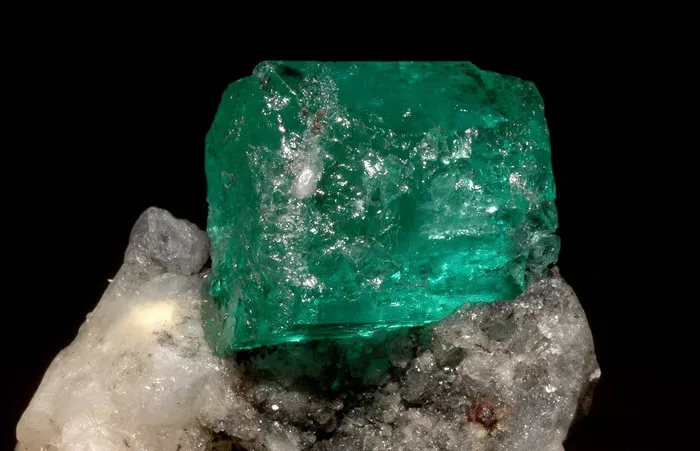Emeralds, with their captivating green color and historical significance, have long been admired and sought after. Their beauty and rarity make them an intriguing option for those considering gemstone investments. However, investing in emeralds requires careful consideration and knowledge of the market. In this quick guide, we will explore the factors that make emeralds a potential investment, examine their advantages and risks, and provide key insights to help you make informed decisions.
Understanding Emeralds as an Investment
Emeralds have a rich history and cultural significance, which adds to their allure as an investment. However, it is essential to understand their unique characteristics and market dynamics before considering them as a financial asset.
a. Rarity and Exclusivity
One of the primary reasons emeralds are considered valuable is their rarity. Compared to other gemstones, high-quality emeralds are relatively scarce, making them sought after by collectors and enthusiasts. The limited supply contributes to their exclusivity and potential for appreciation in value.
b. Beauty and Demand
Emeralds are renowned for their mesmerizing green color and unique charm. Their beauty has captivated people for centuries, making them highly desirable in the jewelry market. The enduring demand for emeralds, both from collectors and consumers, contributes to their investment potential.
c. Emotional and Cultural Value
Beyond their financial aspect, emeralds hold sentimental and cultural value. They have been treasured throughout history by various civilizations and are often associated with wealth, luxury, and power. This emotional connection can enhance the appeal and desirability of emeralds as an investment.
Factors Affecting Emerald Value
To assess the investment potential of emeralds, it is crucial to consider various factors that influence their value and market dynamics. Understanding these factors will help you make informed decisions when entering the emerald investment arena.
a. Quality and Characteristics
The quality of an emerald plays a significant role in determining its value. Key characteristics include color, clarity, carat weight, and cut. Emeralds with intense, vibrant green hues, high transparency, minimal inclusions, significant carat weight, and well-executed cuts are considered more valuable. These quality factors should be carefully evaluated before investing in emeralds.
b. Market Trends and Demand
The value of emeralds, like any other investment, is influenced by market trends and demand. Stay informed about current and projected market conditions, including changes in consumer preferences, emerging jewelry trends, and economic factors that can affect demand and pricing. Market research and consultation with industry experts are essential for making informed investment decisions.
c. Origin and Provenance
The origin of an emerald can significantly impact its value. Emeralds from certain regions, such as Colombia, Zambia, Brazil, and Afghanistan, are highly regarded for their quality and historical significance. Gemstones with documented and reputable provenance often command higher prices due to their authenticity and credibility.
d. Certification and Grading
To ensure the authenticity and quality of an emerald, obtaining certification from renowned gemological laboratories, such as the Gemological Institute of America (GIA) or the American Gemological Laboratories (AGL), is crucial. These certifications provide detailed assessments of an emerald’s characteristics, including color, clarity, carat weight, and treatment information. Certified emeralds generally offer greater transparency and reassurance to potential buyers.
Advantages of Investing in Emeralds
Investing in emeralds can offer several advantages for those seeking to diversify their portfolios and potentially generate returns.
a. Tangible and Portable Asset
Emeralds are physical assets that can be easily stored, transported, and displayed. Unlike stocks or bonds, they provide a tangible form of investment that can be enjoyed visually.
b. Hedge Against Inflation
Precious gemstones, including emeralds, have historically served as a hedge against inflation. Their value may increase during periods of economic uncertainty or currency devaluation, making them an attractive option for wealth preservation.
c. Potential Appreciation
High-quality emeralds have the potential to appreciate in value over time. As the supply of quality gemstones diminishes and demand continues to rise, their scarcity can drive prices upward, leading to potential investment gains.
d. Diversification
Investing in emeralds allows for diversification beyond traditional financial assets, such as stocks and bonds. A well-diversified portfolio can help mitigate risk and potentially enhance overall returns.
Risks and Considerations
While emeralds offer investment potential, it is essential to consider the associated risks and challenges before committing to this asset class.
a. Market Volatility
The market for colored gemstones, including emeralds, can be relatively volatile compared to other investment options. Prices can fluctuate significantly due to factors such as changing consumer preferences, economic conditions, and geopolitical events.
b. Limited Market Liquidity
The market for high-value emeralds can be relatively illiquid, meaning it may take time to find buyers or convert the investment into cash. Selling emeralds at fair prices may require patience and access to a network of potential buyers or specialized auction platforms.
c. Counterfeit and Treatment Concerns
The gemstone market faces challenges related to counterfeit stones and undisclosed treatments. It is crucial to work with reputable dealers, obtain proper certifications, and conduct due diligence to ensure the authenticity and quality of emeralds before making any investment.
d. Expertise and Research
Investing in emeralds requires a deep understanding of the industry, including gemstone evaluation, market trends, and gemological knowledge. It is essential to engage with qualified experts or consult gemological professionals to minimize the risk of making uninformed investment decisions.
Conclusion
Emeralds can offer an enticing investment opportunity for those intrigued by the beauty and potential financial gains of gemstones. Their rarity, enduring demand, and cultural significance contribute to their allure. However, investing in emeralds requires thorough research, careful evaluation of quality factors, market analysis, and consideration of associated risks. It is advisable to work with reputable experts, obtain proper certifications, and stay informed about market dynamics. By approaching emerald investments with knowledge and caution, investors can potentially benefit from the appreciation and diversification this precious gemstone offers.


